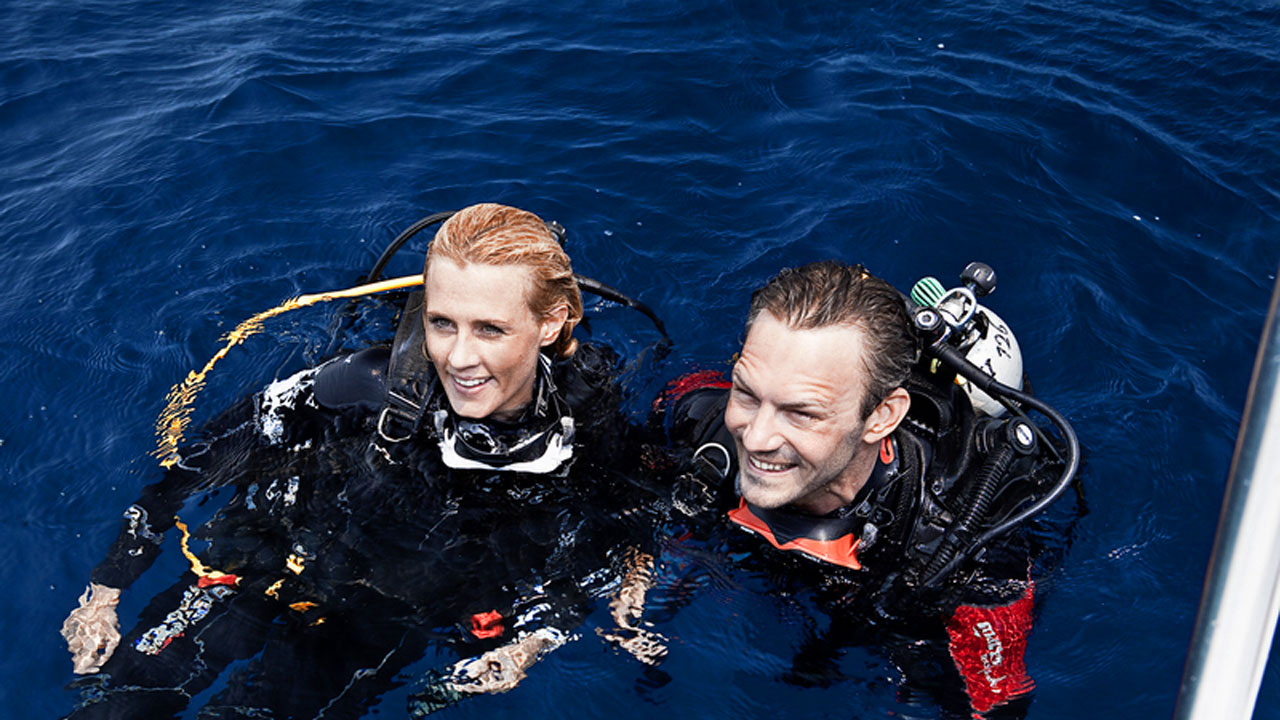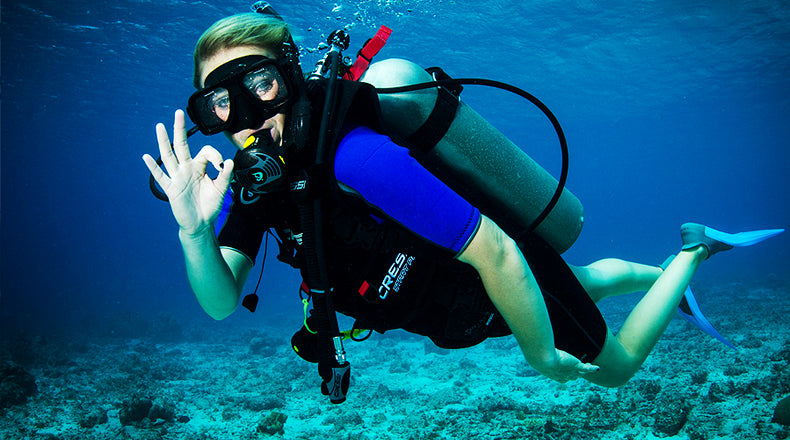Weight Removal Practice Can Save Your Life
If you do find yourself in an emergency while diving, your life could depend on your ability to handle your weighting system. I sincerely hope you never have to face such a situation, but in diving, as in life, it is better to be prepared.
Here’s the problem: most divers rely on weights for only one thing - to submerge. While most diving training courses teach divers how to remove weights in an emergency, it can be hard for a diver in trouble to recall one lesson dimly remembered from some long-ago classroom. Divers are better off practicing regularly so that if they need the skill, they know how to handle their weighting system well.
Understanding weight removal starts with understanding your diving equipment. Many buoyancy compensators today have pockets or pouches for carrying weights. In most models, these pockets and pouches have a quick-release mechanism. In addition, some divers wear weight belts as well as buoyancy compensators. If you wear both, you’ll need to learn how to remove weight quickly from both.
There are two ways you will want to practice removing weights:
At the surface. At the end of a dive, before climbing out of the water, quickly remove your weights and pass them to someone else. Keep in mind that in a true emergency you would drop the weights.
At depth. While underwater, you may want to practice by removing your weights. Since you don’t want to float rapidly to the surface of the water unless it really is in an emergency, do not release the weights. Holding onto them will keep you from floating up. First, snap off any weight belt you have and hold it clear of your body. In an emergency, you would drop the belt, but in practice, simply hold it. Next, pull weight pockets or integrated weights from the buoyancy compensator and hold them. This is often easiest to accomplish when you are on a flat surface underwater and near a solid object.
There are a few things you can do to make weight removal easier. For example, you can take care to always put on your weight belt for right-hand release (if you are right handed). This will ensure that you are always ready and do not have to fumble to undo the belt in an emergency when seconds count. You can also take a close look at your scuba equipment and practice releasing weights while on dry land.
When you are practicing weight removal underwater, you will need to practice putting the weights back before ascending, and this can be tricky. For a weight belt, you can place the belt across the small of your lower back and lean forward, resting the weight on your back. You can then buckle the belt. You will, however, need to make sure that you have not caught or buckled anything in with the belt.
If the belt is too heavy, open the belt on the bottom surface in the water, with the open end to the right. Then slide into position on your back, so that the weight belt is below the tank. Keep one hand on the belt at all times to avoid floating upwards. Reach back and place the middle of the belt over the cylinder before pulling the open end towards the right hip. Quickly roll to the left, holding the belt firmly. At this point, you will be facing down and you can simply buckle the belt, ensuring that no accessories are caught in the belt.
Replacing integrated weights into a buoyancy compensator at depth is simple if weights are removed and replaced one at a time. If diving with a buddy, you can also help each other replace weights. If you are alone, vent air from the buoyancy compensator first and remove any straps or accessories that might interfere with re-inserting your weights. Then, simply insert the weights and close the pouch with the closures. Ensure that the weights are secure before proceeding on your dive.
In a real emergency, you would get rid of your weights and drop them without a second thought. However, in practice, you do not want to lose valuable diving equipment, so practice both removing and reinserting weights and weight belts. However, keep in mind that it is weight removal that might save your life.




